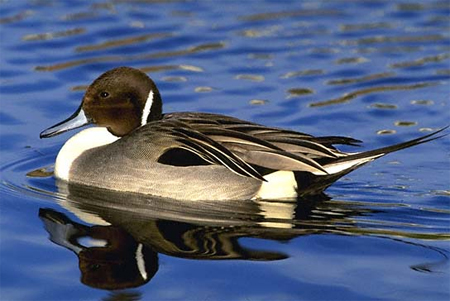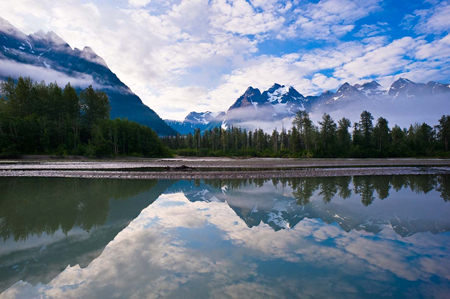
Last week US Secretary of the Interior Ken Salazar announced the release of the 2010 State of the Birds Report, a collaborative report conducted by the DOI as well as several other notable bird and conservation groups. This year’s State of the Birds Report followed up on the troubling findings from the 2009 report, which concluded that hundreds of species of birds were being impacted already by climate change.
This year’s report followed up with some equally troubling news (from DOI press release):
-
• Oceanic birds are among the most vulnerable species because they don’t raise many young each year; they face challenges from a rapidly changing marine ecosystem; and they nest on islands that may be flooded as sea levels rise. All 67 oceanic bird species, such as petrels and albatrosses, are among the most vulnerable birds on Earth to climate change.
• Hawaiian birds such as endangered species Puaiohi and 'Akiapola'au already face multiple threats and are increasingly challenged by mosquito-borne diseases and invasive species as climate change alters their native habitats.
• Birds in coastal, arctic/alpine, and grassland habitats, as well as those on Caribbean and other Pacific islands show intermediate levels of vulnerability; most birds in aridlands, wetlands, and forests show relatively low vulnerability to climate change.
• For bird species that are already of conservation concern such as the Golden-cheeked Warbler, Whooping Crane, and Spectacled Eider, the added vulnerability to climate change may hasten declines or prevent recovery.
• The report identified common bird species such as the American Oystercatcher, Common Nighthawk, and Northern Pintail that are likely to become species of conservation concern as a result of climate change.
It seems like birds of all different types and habitats are struggling from a combination of habitat loss and climate change, though oceanic and tropical (namely, Hawaii) are doing the worst.

Even common bird species like the Northern Pintail are likely to become species of conservation concern. Nearly half of its North American population breeds in the boreal forest.
Credit: Tom Vezo
However, not all the news was bad for birds. Secretary Salazar mentioned several new projects for limiting the negative impacts of climate change on birds. Another highlight of the report was the argument that collective efforts between government agencies, non-profits, and local individuals can and have worked in the past. One of the major examples of this was conserving more carbon-rich forests, which helps mitigate climate change and protect important bird habitats:
-
“The report offers solutions that illustrate how, by working together, organizations and individuals can have a demonstrable positive impact on birds in the U.S. Specifically, the report indicates that the way lands are managed can mitigate climate change and help birds adapt to changing conditions. For example, conserving carbon-rich forests and wetlands, and creating incentives to avoid deforestation can reduce emissions and provide invaluable wildlife habitat.”
This is especially the case in the boreal forests of both Alaska and Canada. Not only are those boreal forests particularly important in terms of carbon storage, but hundreds of migratory species ranging from songbirds to waterfowl to raptors use this expansive forest as a breeding ground in the summer.

The boreal forest's high level of intactness and botanical richness provide ideal breeding grounds for a wide variety of birds.
Credit: David Nunuk
It is also expected to be a crucial region for species affected by climate change, as the large expanses of pristine habitat will provide space and geographical diversity for birds struggling to adapt to the changing conditions brought on by climate change. This from our report on forests and climate change last fall:
-
"Canada’s Boreal Forest presents perhaps the best opportunity globally to apply conservation as a climate change adaptation strategy. Canada’s Boreal Forest contains one quarter of the remaining intact forest ecosystems on the planet and the largest contiguous forest ecosystem left on the globe. At present, much of Canada’s Boreal Forest is inherently resilient. Conservation is fundamental to maintaining the capacity of this globally significant biome to adapt to climate change."
It is great that the US government is committing to continue projects with conservation value overlaps as well as bird-specific projects – someday in the future perhaps the US and Canada (and maybe even Mexico) could work together more on conservation opportunities and important bird areas given the enormous overlap of migratory species!

